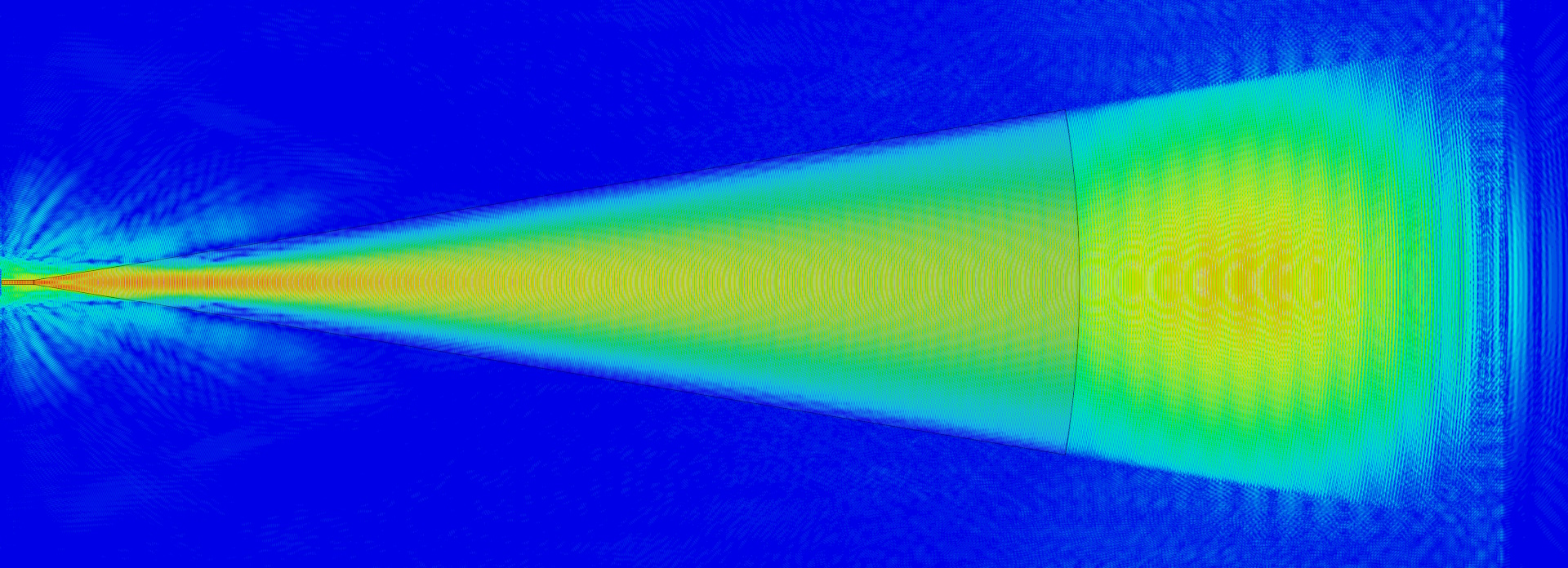Optical Device Simulation
Photonic Circuit, Graphene, Metamaterial and Photonic Crystal Simulation
Modeling Plasmonics and Nanophotonics with Optical Software
Photonic and plasmonic devices open up new possibilities in many technology sectors, such as high-speed communications or medical sensors. Photonic Integrated Circuits (PICs) allow signal transmission and processing at incredible data rates in nanoscale devices. Novel materials such as graphene and metamaterials unlock new possibilities for previously unsolved problems.
Simulation accelerates the optical design process, reduces the risk and unlocks the full potential of this technology. Users can visualize the behavior of components and optimize their performance without the cost of experimenting with prototypes.
3D Optical Simulation Software
CST Studio Suite, an industry-leading high-frequency electromagnetic simulation tool from SIMULIA, accurately and efficiently models the behavior of waves at optical frequencies. Import links to photonic device layout tools automatically create 3D simulation models, while the materials library includes optical frequency material models. Post-processing templates can calculate industry-standard measures. High-performance computing options allow the rapid simulation of complex optical designs many hundreds of wavelengths across.
Multiphysics simulation, linking photonic simulation to thermal, drift-diffusion, structural and fluid solvers, can calculate how devices heat up when used and determine the risk of detuning from thermal expansion.
Optics Design Example Applications
CST Studio Suite simulation technology enables engineers to design photonic components and optical systems such as:
- Devices for photonic integrated circuits (PICs)
- Waveguides
- Grating couplers
- Ring resonators
- Splitters
- Tapers
- Modulators
- Metamaterials, filters and gratings
- Graphene devices
- Photonic crystals
- Nano-antennas
- Solar cells
- Lenses
Start Your Journey
Explore the technological advancements, innovative methodologies, and evolving industry demands that are reshaping the world of Optical Device Simulation, Plasmonic and Nanophotonic. Stay a step ahead with SIMULIA. Discover now.
FAQs about Optical Simulation Software
In birefringent materials, the phase velocity of a light wave depends on the polarization and the propagation direction. Mathematically this means that the permittivity of such materials is a tensor. Materials for which two of the components are identical are referred to as uniaxial. If all three components are different from each other, the material is called biaxial.
Examples of birefringent materials found in nature are crystals with asymmetric crystal structures, such as Quartz. Hyperbolic materials are a special case where one of the tensor components has a negative sign. The material, therefore, demonstrates dielectric properties for one polarization and metallic for the other polarization. Another way to create birefringence is to stress isotropic materials such that they are deformed and their isotropy is lost.
A special form of optical anisotropy is the magneto-optical effect. If a magneto-optically active material is magnetized, the refractive index of the left-hand and right-hand polarized light will differ orthogonally to the magnetized axis. Magneto-optical effects are widely used for optical isolation because the biasing magnetic field breaks time-reversal symmetry and makes the effect non-reciprocal. Let us assume that we launch light with a polarization angle of let us say 45° into a waveguide. This light leaves our example waveguide 90° polarized. If this light is now reflected back into the waveguide then it is not reverted to the original input state of 45° polarization but rotated further to 135°.
A nonlinear relation between the displacement field and the electric field means the refractive index is dependent on the electric field. The dependence of the refractive index on the optical intensity can be used to build, for example, a bistable element.
Also Discover
Learn What SIMULIA Can Do for You
Speak with a SIMULIA expert to learn how our solutions enable seamless collaboration and sustainable innovation at organizations of every size.
Get Started
Courses and classes are available for students, academia, professionals and companies. Find the right SIMULIA training for you.
Get Help
Find information on software & hardware certification, software downloads, user documentation, support contact and services offering








